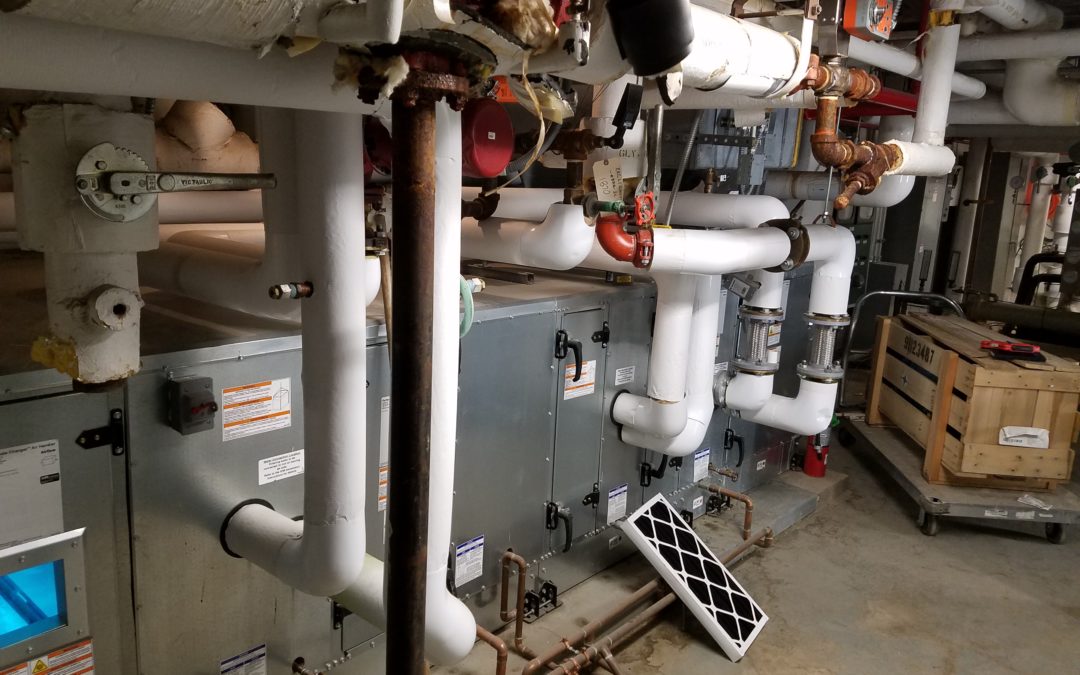With summer (hopefully) on its way, you may start thinking about the air temperature in your home or office. We’re lucky to have the technology to regulate the temperature and humidity of the air inside buildings. Have you ever thought about the process and equipment necessary to make that happen, though?
According to The Engineering Mindset, air handling units supply and distribute conditioned air throughout the ductwork within a building, usually on a commercial or industrial scale. These units are tasked with circulating air and keeping it at a comfortable temperature. There are two sections of an AHU: supply and return. The supply has more components than the return, which are broken down below.
The first section of the AHU that obtains air in from outside includes a grate to filter out garbage and to keep other foreign objects from entering into the system. The next part of the system includes a damper, which can either open or close, letting air in and out, or preventing air from moving completely. The system then continues with layers of filters, which prevent dirt and dust from being distributed around the building.
Heating and cooling coils follow, which either increase or decrease the temperature of the air depending on the set temperature on the thermostat. The AHUs also control the moisture level within the air. If the air is too dry, the AHU will emit a spray of water into the air before circulating it. If the air is too humid, the humidity is reduced using a cooling coil. Following the heating and cooling coils is a fan, which pulls the air from the outside, and then pushes it throughout the ductwork of the building. This is the basic design of an AHU supply, but some versions include different technology such as heat wheels and air plate heat exchangers.
The return system is much simpler. It usually only consists of a fan to pull the air out of the building, and a damper to either allow or prevent air flow. There is also a grate at the end of the system to prevent animals or garbage from entering into the vents. Although the system is not as complex as the supply system, it is just as important to remove the used air as it is to add fresh air.
The AHU systems are essential to maintaining the internal temperature and appropriate humidity of a building. If you require AHU system design, please contact Director of Engineering Design Tom Gilmartin at (716) 592-3980 ext 124 or [email protected].


